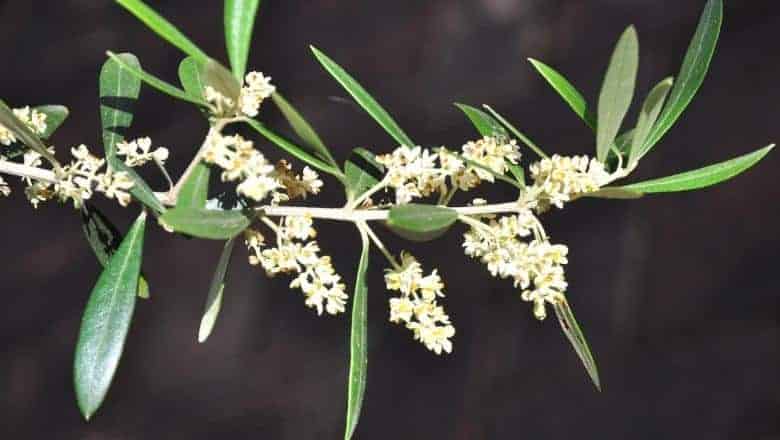When Do Olive Trees Bloom? (Detailed Answer)
Olive Knowledge is a part of Amazon Associates. As an Amazon Associate, we earn from qualifying purchases. Read our Affiliate Disclosure to learn more.
Blooming is an extremely important process for olive trees, as it’s a preparation for olive fruits that you’ll get in the Autumn. In this post, I’ll show you when you can expect your olive trees to start flowering, but also the importance of those flowers on olive trees.
Key Takeaways:
- Olive trees bloom in late spring. It’s mostly from mid-May to the end of May.
- The blooming process usually lasts from ten to twenty days.
- Depending on your climate, blooming can occur slightly earlier or slightly later.
What Does To Bloom Mean?

To bloom means to produce flowers. Olive trees need flowers in order to bear fruit one day, and it’s an extremely important process of olive fruit growth.
During the flowering of olives, the flower is not visited by bees and other insects, which transfer pollen from flower to flower and thus support fertilization. That’s why olive pollen is transmitted exclusively by the wind when the olive blossoms and that’s why the olive is an anemophilous plant.
According to some research, it has been proven that wind can carry pollen over long distances. As you can see, light breeze days are extremely important during the blooming process.
We can separate the blooming process into three phases:
- The beginning of flowering is when about 55% of the total number of flowers on the tree is open
- Full flowering when 90% of the flowers on the tree are open
- End of flowering when more than 90% of the flowers on the tree have bloomed.
Olive trees produce three types of flowers:
- Male flowers (staminate flowers)
- Female flowers (pistillate flowers)
- Hermaphroditic flower
The olive blossom, called fringe, can have anywhere between 4 to 40 flowers. The flower is bisexual, which means it needs a pollinator or pollen of another variety.
Olive fruits can be produced only by female or pistillate flowers, which shows the importance of the blooming process of olive trees.
What Month Do Olive Trees Flower?
I already gave you a short answer initially, but now I want to answer everything in detail. The flowering process of olive trees may vary depending on the year, climate conditions, geographical area, etc.
In the most suitable climates for growing olives, olives will bloom from April to May. 2nd part of May is the best time for olives to bloom. In Australia and New Zealand, since they’re in the southern hemisphere, you can expect olive trees to bloom from September to November.
If the temperatures during the Winter are too high, you can expect fewer flowers. The ideal temperature during the Winter is between 0 and 7 degrees Celsius. That temperature range won’t damage olive trees and will be beneficial for ideal flower growth.
How Long Does An Olive Tree Bloom?

Most olive trees will start to bloom and bear fruits anywhere between 3-5 years after they’re planted, and they’ll reach full fruit production in 7-8 years after planting.
So, if you just planted your olive trees last year, don’t expect them to bloom for the next 2 to 3 years. Some sorts of olives may need even more time to bloom and bear fruits.
There’s no definitive answer on how long will an olive tree bloom, and it depends on many factors, but I’ll try to keep it as simple as possible. Olive trees can bloom and bear fruit as long as it’s healthy, have the right climate conditions, and are properly watered and fertilized.
As you may know, olive trees can live very long; there are some trees older than 1000 years, and they’re still blooming. However, you can expect them to live around 500 years for most olive trees. And if everything’s okay, they’ll bloom and produce fruit for at least 150-200 years.
Do Flowers On Olive Trees Turn Into Olives?
Flowers on olive trees will later turn into olive fruit. However, not all types of flowers are capable of producing olives later on. Some research shows that only 1% – 2% of flowers will set fruit. Even though it sounds very little, it’s more than enough for rich harvests.
Fruit can be produced only by pistillate flowers, so the number of pistillate flowers will determine the amount of olive yield.
At the end of the blooming process, all the flowers that don’t produce fruit will fall from the tree, and only the ones that germinate fruits will stay on the tree.
